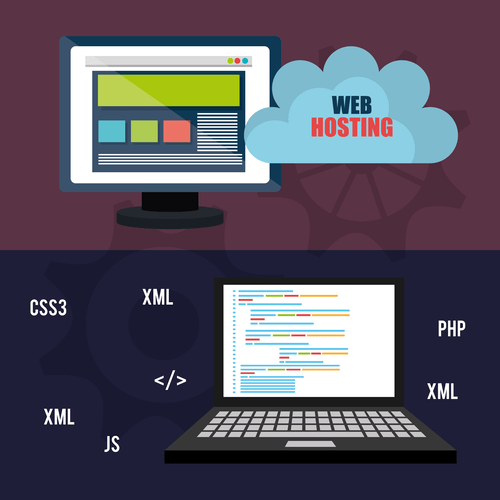Virtually every type of cross-border transaction now has a digital component. The in-state of a block is the set of variables that are live at the start of it. It initially contains all variables live in the block, before the transfer function is applied and the actual contained values are computed. The transfer function of a statement is applied by killing the variables that are written within this block . The out-state of a block is the set of variables that are live at the end of the block and is computed by the union of the block’s successors’ in-states. The efficiency of iteratively solving data-flow equations is influenced by the order at which local nodes are visited.
- A context-sensitive analysis is an interprocedural analysis that considers the calling context when analyzing the target of a function call.
- Data-flow analysis is a technique used by software engineers to analyze the way values of variables change over time as a program is executed.
- Interprocedural, finite, distributive, subset problems or IFDS problems are another class of problem with a generic polynomial-time solution.
- It is often convenient to store the reaching definition information as” use-definition chains” or “ud-chains”, which are lists, for each use of a variable, of all the definitions that reaches that use.
- After solving this set of equations, the entry and/or exit states of the blocks can be used to derive properties of the program at the block boundaries.
- When we compare the computed gen with the “true” gen we discover that the true gen is always a subset of the computed gen. on the other hand, the true kill is always a superset of the computed kill.
The underlying code developed by Bolló for displaying the data is available on GitHub, further promoting transparency and further collaboration. Users can access the data behind the visualizations, which are openly available and accessible from the website. There are several implementations of IFDS-based dataflow analyses for popular programming languages, e.g. in the Soot and WALA frameworks for Java analysis. The live variable analysis calculates for each program point the variables that may be potentially read afterwards before their next write update. The result is typically used bydead code elimination to remove statements that assign to a variable whose value is not used afterwards.
The CLion Blog
However, global data flow is less precise than local data flow, and the analysis typically requires significantly more time and memory to perform. It presents six different estimation methods that researchers can use to gain insights into migration flows. These estimation methods are essential due to the scarcity of reliable international migration flow data, hindering the measurement of patterns and trends in global migration flows. Collection of data-flow information about the program as whole and to distribute this information to each block in the flow graph is much necessary in order to do code optimization and a good job of code generation. A combination of control flow analysis and data flow analysis has shown to be useful and complementary in identifying cohesive source code regions implementing functionalities of a system (e.g., features, requirements or use cases). The details of how data-flow equations are set and solved depend on three factors.
The notions of generating and killing depend on the desired information, i.e., on the data flow analysis problem to be solved. Moreover, for some problems, instead of proceeding along with flow of control and defining out in terms of in, we need to proceed backwards and define in in terms of out. In order to do code optimization and a good job of code generation , compiler needs to collect information about the program as a whole and to distribute this information to each block in the flow graph. Two prominent publications support the website’s visualization and estimation methods. A 2019 paper published in Scientific Data, compares the six main estimation methods proposed for estimating global migration. It also introduces a set of validation tests that assess the accuracy of these estimates by comparing them to reported migration flow data, predominantly from affluent Western countries.
Chapter: Principles of Compiler Design : Code optimization
It is the analysis of flow of data in control flow graph, i.e., the analysis that determines the information regarding the definition and use of data in program. In general, its process in which values are computed using data flow analysis. The data flow property represents information that can be used for optimization. The examples above are problems https://www.globalcloudteam.com/ in which the data-flow value is a set, e.g. the set of reaching definitions , or the set of live variables. These sets can be represented efficiently as bit vectors, in which each bit represents set membership of one particular element. Using this representation, the join and transfer functions can be implemented as bitwise logical operations.

The join operation is typically union or intersection, implemented by bitwise logical or and logical and. The transfer function for each block can be https://www.globalcloudteam.com/glossary/data-flow-analysis/ decomposed in so-called gen and kill sets. Since data flows along control paths, data-flow analysis is affected by the constructs in a program.
Using local taint tracking¶
This article describes how data flow analysis is implemented in the CodeQL libraries for Java and includes examples to help you write your own data flow queries. The following sections describe how to use the libraries for local data flow, global data flow, and taint tracking. If the control paths are evident from the syntax, then data-flow equations can be set up and solved in a syntax directed manner.

The initial value of the in-states is important to obtain correct and accurate results. If the results are used for compiler optimizations, they should provide conservative information, i.e. when applying the information, the program should not change semantics. The iteration of the fixpoint algorithm will take the values in the direction of the maximum element.
Javatpoint Services
Unused values – detects variable values that are never used after being assigned. Endless loops – reports any for, while, and do statements or goto loops that can exit only by throwing an exception. The main goal is to test the tools in all kinds of non-standard and unusual environments you may have set up, so we can make sure we haven’t missed anything. If you come across any bugs or peculiar behavior, please report them to our issue tracker so we can collect and fix as many issues and regressions as possible. In this code, at line 3 the initial assignment is useless and x +1 expression can be simplified as 7.
Having chosen an evaluation order, we are free to release the space for a set after all uses of it have occurred. Earlier circular dependencies between attributes were not allowed, but we have seen that data-flow equations may have circular dependencies. It is natural to wonder whether these differences between the true and computed gen and kill sets present a serious obstacle to data-flow analysis. We define a portion of a flow graph called a region to be a set of nodes N that includes a header, which dominates all other nodes in the region. All edges between nodes in N are in the region, except for some that enter the header.
Data flow analysis can have a number of advantages in compiler design, including:
Furthermore, it depends on whether the data-flow equations are used for forward or backward data-flow analysis over the CFG. Intuitively, in a forward flow problem, it would be fastest if all predecessors of a block have been processed before the block itself, since then the iteration will use the latest information. In the absence of loops it is possible to order the blocks in such a way that the correct out-states are computed by processing each block only once. Data-flow analysis is a technique used by software engineers to analyze the way values of variables change over time as a program is executed.

On the other hand, underestimating the set of definitions is a fatal error; it could lead us into making a change in the program that changes what the program computes. For the case of reaching definitions, then, we call a set of definitions safe or conservative if the estimate is a superset of the true set of reaching definitions. We call the estimate unsafe, if it is not necessarily a superset of the truth. Global data flow tracks data flow throughout the entire program, and is therefore more powerful than local data flow.
CLion 2023.2 EAP5: PlatformIO Integration, Vcpkg Manifest Mode, Inlined Register View
Data-flow analysis is typically path-insensitive, though it is possible to define data-flow equations that yield a path-sensitive analysis. Interprocedural, finite, distributive, subset problems or IFDS problems are another class of problem with a generic polynomial-time solution. Solutions to these problems provide context-sensitive and flow-sensitive dataflow analyses. Data-flow analysis often employs a CFG , similar to a flow chart, showing all possible paths of data through the program. The team have tentative plans to expand the visualization tool to include internal migration in different countries, such as China. Furthermore, they aim to introduce additional visualizations, including a map-based method, to enhance the user experience and facilitate a deeper understanding of migration patterns.
